This New Zealand couple are on a mission to save heritage apple trees PLUS the best apples by New Zealand region
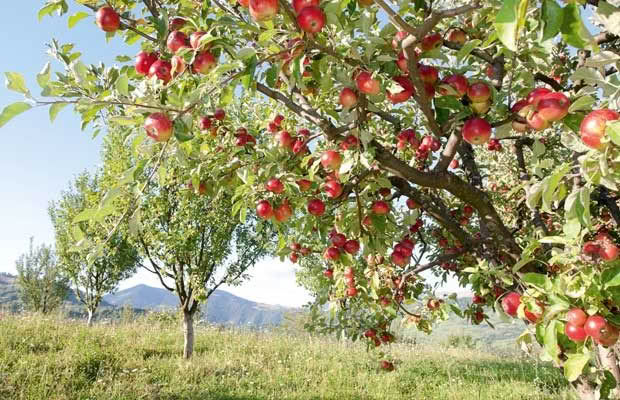
You definitely won’t have eaten as many varieties of apple as a couple who have made it their personal crusade to save the heritage apple trees in their neck of the woods.
Words: Nadene Hall Additional images: Robyn Guyton & Krystina Hill
You have to be a true apple lover to eat apples for breakfast and dinner every day for three years, but that’s what Robyn Guyton has done as part of her quest to help rescue, collate and pass on the best of the Southland region’s heritage varieties.
She and husband Robert have collected grafting material from apple trees in old orchards and those growing wild on roadsides all over Southland as part of what is called the Open Orchard Project, a group dedicated to growing, propagating and getting all the best heritage apples back into gardens and orchards around their region.
The taste test is an important factor in identifying named heritage varieties, and in working out which of the wild apples are worth spending more time on propagating.
Apples need to be tested both raw and cooked, hence the Guytons’ unusual eating habits. It’s not just an apple a day that keeps the doctor away in their household; it’s a different variety of apple a day.
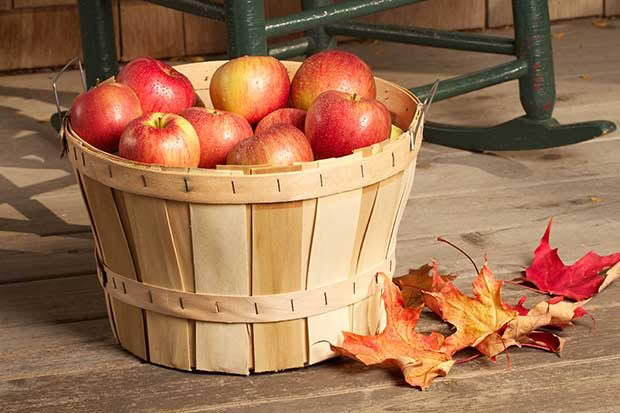
“We eat the raw apple the night before, then we cook it, so every morning for three years we’ve had a frypan of stewed apples or baked apples. They’re very good for you but you kind-of get over apples! Some are quite boring, some are nice raw, some are nicer stewed.”
The Guytons were inspired to begin their apple project after having little success growing modern fruit tree cultivars in the food forest on their 0.8ha (2 acre) block in Riverton, 30km west of Invercargill.
“We got told you can’t grow apples in Southland, but all that meant was we couldn’t grow Pacific Rose or Fuji or Braeburn, the modern ones, but we could grow the very old ones.”
There are more than 14,000 recorded apple varieties in the world but you’ll only find between 10 and 20 types – most of them modern commercial breeds – if you go shopping in a typical NZ supermarket.
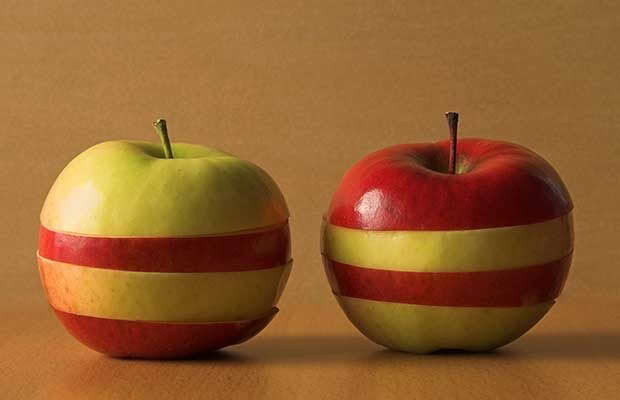
“In the old days they kept a lovely mix of apples going,” says Robyn. “But supermarkets want the ones that look right.”
It was the owner of their local sawmill who suggested they look at ‘the old trees’ in the 120 year old orchard on his property. It had just a few of the apples and other fruit trees originally brought over to New Zealand by European settlers from the 1850s onwards, so the Guytons took scionwood for grafting.
Most immigrant families didn’t have much room to spare on the boats that brought them out and very limited space for fruit trees.
Southland’s climate then made sure it was only the very hardiest, most disease-resistant trees that survived the last century, many without tending for decades.
“We’ve got apples here from Scotland to France to Czechoslovakia to Russia,” says Robyn. “The settlers brought them over and I decided they would have brought the best ones from their homeland – they brought the best furniture and the best skills so their trees were probably the best ones too.”
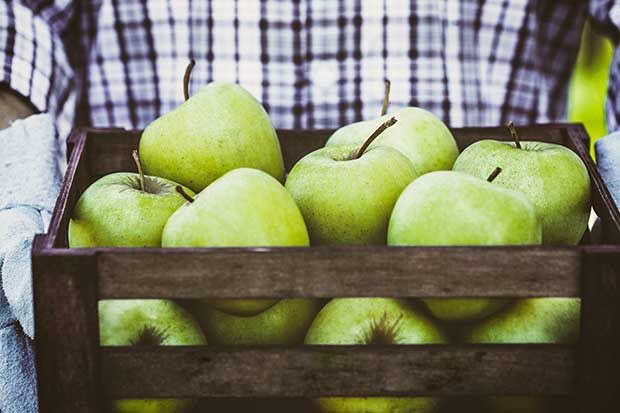
The great Southland apple tree hunt began in earnest in 2006 when the Guytons heard about a few more old orchards. Then they put an advertisement in the local newspaper asking Southland people to let them
know about any they knew of, thinking they might find a few more. Robyn says they had no idea how this one act would influence their lives for years to come.
“Over the last five years, we’ve been to over 100 old orchards! We’ve driven all over Southland to every corner. It was so exciting when we realised there were lots and lots of them. The very first orchard was one of Captain Howell’s (Southland’s first European settler), planted in 1853 – we think it could be the oldest in New Zealand. There were five trees left out of the 50.
Then we heard the stories about families and where the fruit came from – we felt like Indiana Jones going around finding out about them, we became quite passionate about it.
“We got lost – often – on wild country roads but it was really cool once we got to an orchard because you’d also often see the broken-down house, the old chicken coop, the tractor shed with the old machinery still sitting in it, it was like visiting the past. I think now we have better machines and better buildings but the fruit was better then.”
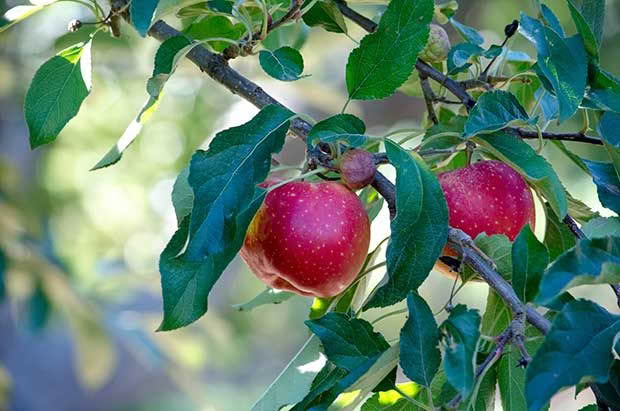
The Guyton’s trips were often urgent missions when locals would let them know if they were clearing an old house site or ripping out old orchards for pasture.
“We had dairy farmers coming in telling us to get in before the bulldozer.”
The reason these trees are so important is their irreplaceable lineage, as Robyn explains.
“Every apple originally grew from a pip and you can’t get exactly the same one again unless you graft it. If the original trees dies or gets taken out you can’t get it back. The settlers brought us the very best from their homeland, the best of the best from the past six or seven centuries, so it would take us another 700 years to get back to the same point. We felt honour-bound to keep them going.”
When they first started apple hunting, Robyn and Robert thought there might be a few dozen varieties that had survived the ravages of time and neglect. But they miscalculated. They now have a large area of grafted apple trees on their small block, around 65 in total with 2-3 specimens of each variety.
The rest of the collection – more than 300 varieties – is growing on land belonging to local supporter Geoff Genge of Marshwood Gardens. The young trees are checked often and careful recordings are made of every aspect of their growth and production.
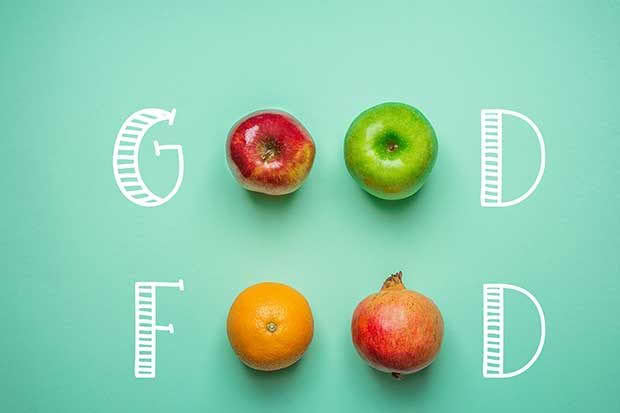
“We try to see the fruit first,” says Robyn. “We’ve learnt not to save every tree, although sometimes if they’re clearing an orchard fast we have to make a copy of each tree in case it’s a special one.”
Having the trees nearby means Robyn can keep good records in her ongoing quest to identify as many as possible.
“I can go to (Geoff’s) and check which ones blossom at the same time.
Are the apples the same colour? Do I think I have a double-up? I’m very happy to think we’ve probably got 95% of Southland’s biodiversity – probably only 5% were lost – and probably the ones we didn’t get to were double-ups. Now I’m studying them, finding out names, the quality of fruit and whether a tree is worthwhile (keeping).”
One variety that seems to have been very popular is an old French apple.
“I’d say it was in 80% of the orchards (visited): Reinette du Canada, it’s quite common.”
So far, the Open Orchard Project has 370 different varieties of heritage apple, plus 40 heritage pear varieties (being grown on yet another volunteer’s property) and about 30 heritage plums.
However, it’s one thing to have what you think is an old variety and quite another to find out its name. There is a list of 40 characteristics that must be checked to make a proper identification of an apple, including how long the stalk is and how wide it is, how deep the top of the apple is, where the stalk joins it, the colour around the stalk, its colour (is it russet or red or smooth?).
Then there’s the taste tests where the apple is eaten both raw and cooked.
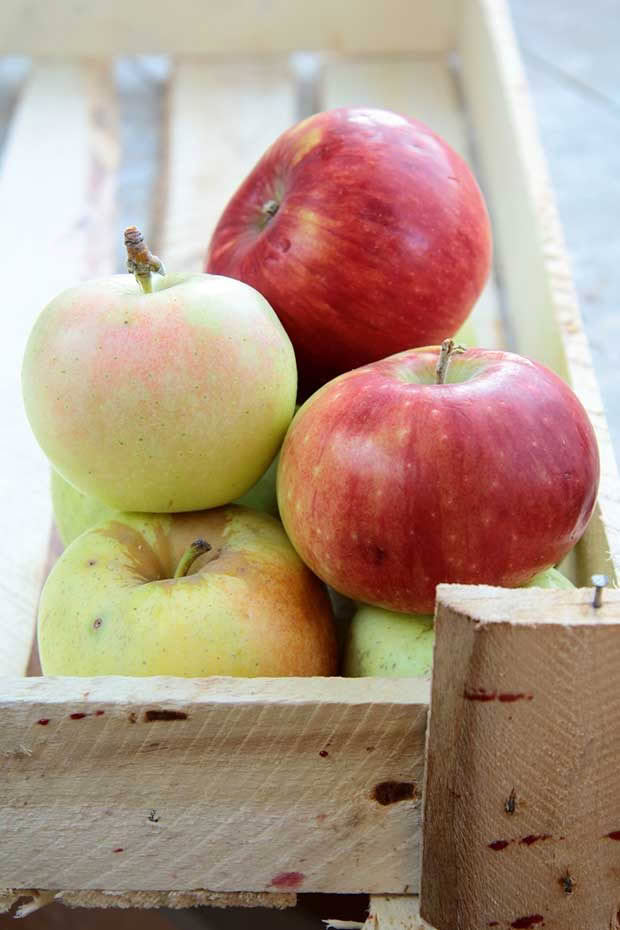
“We’ve probably got about a quarter identified,” says Robyn. “If they were planted out in a 19th century orchard then we know they’ve got names and that they probably came from Europe. If they’re growing by a fence, a railway or a road, they’re wild (grown from discarded seed) – if they’re a good (tasting) apple, we can call them a name and we’ve got around a dozen ‘Southland’ apples so far.”
“They’re totally unique. We found a tree growing on the side of the road just north of Dipton and it had a lovely red splash of colour where the stalk is, it’s really bright, so we called it Dipton Red Burst.”
Now all the apple trees have been grafted, several of each one will be kept for comparison and also so grafting material can be taken from them.
Project Open Orchard teaches people how to graft their own trees – a very simple process – and sells cuttings from its collection so that locals will start to spread the trees all over Southland again.
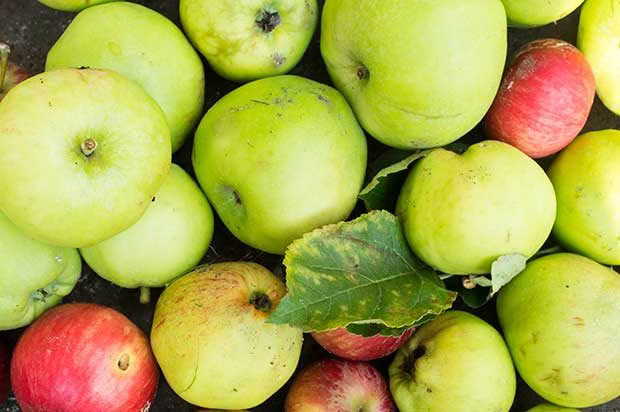
“We charge them $2-$3 to make a copy – we’re not going to patent them as that would make them expensive. We want to keep diversity in Southland… it’s very important that people have more than just the ones you can buy in the shops.
(We want) the ones you can grow locally, that like the hot or the cold or resist insects. You don’t want to put all your eggs in one basket, we need at least a few hundred varieties to choose from.
“Some of these apples are ready in late January, some are ready in late September, there’s heaps in the middle, they’re all different, they taste different, some are for cooking, some are for eating.”
Robyn sees the project going for years to come, with some of their ‘finds’ being discarded if they get diseased or don’t taste good, but most being shared around the Southland community.
“We sell them cheaply to schools and community gardens, we’ve got 5000 of them out there so far. It’s a great project and Southland people really appreciate it. I guess it’s a little bit romantic, saving the best of old times, but it’s a great legacy, saving them to pass on to their children and grandchildren.
Some of the apples that Robyn is working to identify include:
❦ a dark red, white-fleshed eating apple that can be harvested in July, found thriving without care on a Blackmount farm;
❦ a completely white apple growing on a farm behind Ohai;
❦ a small golden apple that has a rich smell and taste found flourishing on a family farm at Browns, north of Invercargill.
Robyn says they suspect some of their apples will be very rare ones that may no longer exist anywhere else in the world and their project has already found international interest, particularly in the UK.
For more information on the Open Orchard Project.
ROBYN’S TOP 5 FAVOURITE APPLES
Worcester Pearmain
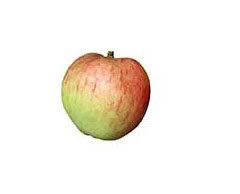
Origin: England
Year: 1893
Type: eating apple
“It’s a really lovely little red striped apple, wide at the top, narrow at the bottom, ready in February. It’s an early eating apple, it’s just very sweet and has a late summerish, nice berry flavour and it’s quite small. It’s good for 2-3 weeks.”
Keswick Codlin
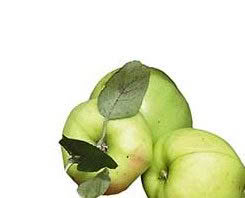
Origin: England
Year: 1793
Type: cooking apple
“This is a really soft, early cooking apple, found in a castle (Gleaston Castle near Ulvers) in their rubbish dump. They’ve got a ‘seam’ down the side of them, it looks like they’ve been sewn up. They last 2-3 weeks, and you eat them or cook and freeze them.”
Peasgood Nonsuch
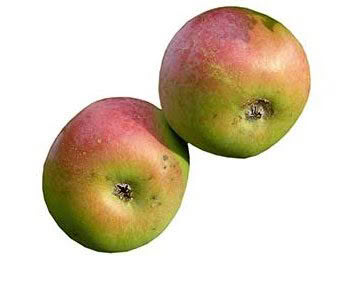
Origin: England
Year: 1858
Type: cooking and eating apple
“This is a mid-season apple, Mrs Peasgood in Lincolnshire grew it and it was this huge apple, each weighed about 1kg, it’s for cooking and eating and it was so huge they said it was nonsense (nonsuch).”
Merton Russet
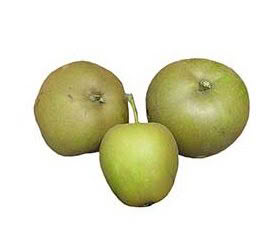
Origin: England
Year: 1921
Type: eating apple
“A russet is basically an apple that has got a dusky brown skin and they do really well in Southland – if you have a hail storm or something like that, they’re really tough. They have a rich, nutty flavour in the skin, they’re really lovely. Robert likes Merton Russet, but there’s lots you could like depending on who you are, if you’re cooking, eating, baking or stewing.”
Adam’s Pearmain
Origin: England
Year: 1826
Type: dessert apple
“There’s quite a few of these in Southland, it’s a long apple that tapers down. It has quite a nice tough, dark red skin with rusting on it. We’ve found six orchards with it and when we looked up the description of the leaves, pip size, everything matched perfectly so we know its complete history, where it’s from, who discovered it and what it’s good for.”
KRYSTINA AND THE APPLES
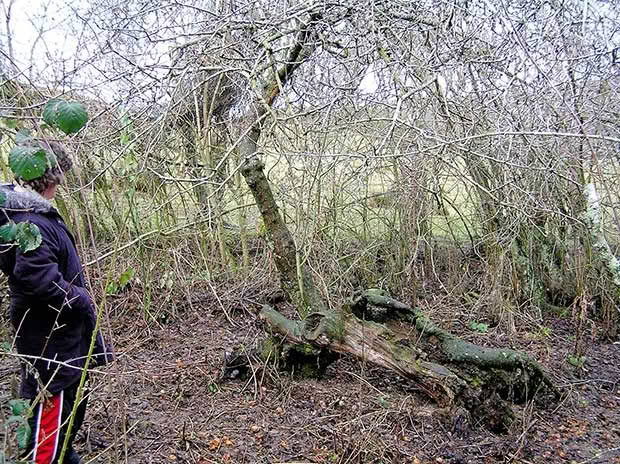
An old apple tree on a farm in Welshman’s Gully.
Like the Guytons, Krystina Hill and the Canterbury Tree Crops Association (TCA) Heritage Fruit Archive have been assembling a collection of around 200 named heritage apple trees that suit their local climate.
They’re also testing which local varieties do best under a no-spray organic regime.
“It’s also our group’s intent to preserve old pear and plum varieties as well,” says Krystina. “We’ve just started on the apples because there are so many more of those to deal with, and many heritage apple varieties are so rare there’s probably only two or three trees in the entire country.
“I love ‘real’ apples because they taste very, very good, are suitable for growing in a wide range of climates and soils, and have a much larger range of uses than most other stone/pip fruit. They are also extremely good for you.
“If you stick with the very old varieties, (they) are high in both Vitamin C and trace minerals, but also anti-cancer (anti-oxidants) compounds and other flavinoids that help protect against Alzheimers, and certain types of cancers.”
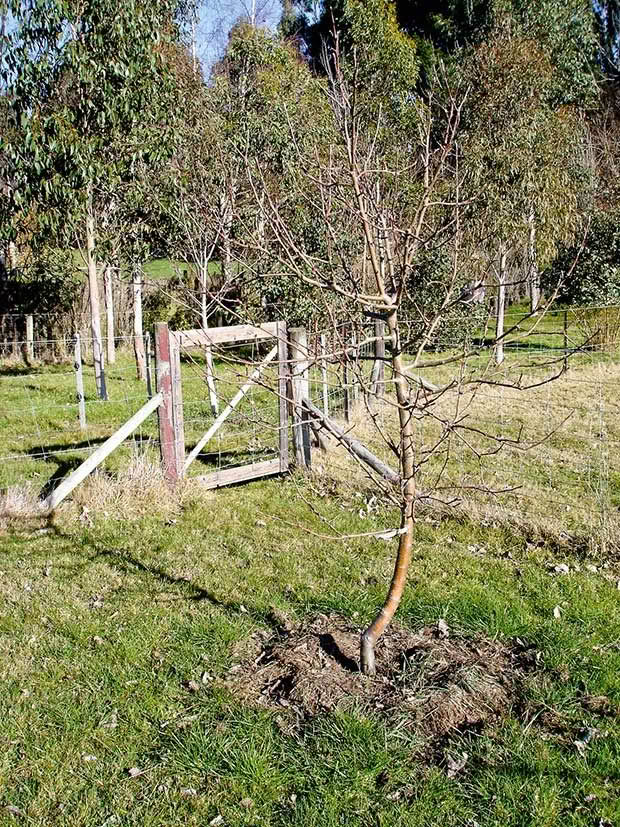
One of Krystina’s five-year-old grafted trees.
She is also part of a small group of Tree Crops Association apple enthusiasts from around NZ who are working to save and propagate rare heritage apple varieties, and discover worthwhile local provenance varieties like Monty’s Surprise and Mount Cook. Krystina has also compiled an amazing list of suggested trouble-free heritage apple varieties that are likely to suit different regions, and that can be bought at some specialist nurseries.
For Krystina, saving old fruit trees from generation’s past is all about the future.
“I’m not doing it for the trees, actually. To be overly melodramatic, I’m doing it for my son’s generation and his future children’s generations. If the climate does become more and more unstable, and western economies do become poorer and poorer (as oil becomes increasingly scarce and expensive), then heritage fruit, vegetables, older types of grasses for pastures and rare breeds of animals that can live outdoors without much human aid or lots of chemicals to keep them going are going to be essential, so people can feed their families from their own efforts.”
WHICH HERITAGE APPLES SUIT YOUR PLACE BEST?
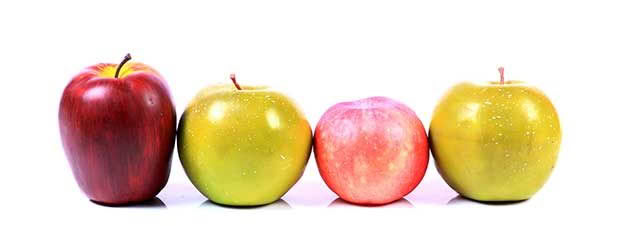
New Zealand’s long, thin islands have many different climates. An apple that does well in Northland is likely to do poorly in a southern region. Matching the apple to the region is important for the best results.
This list includes a lot of rare heritage apple tree varieties that you may not be able to find at your local garden centre or nursery. Krystina Hill suggests the best way to find many of these varieties will be through specialist fruit tree nurseries or your local NZ Tree Crops Association branch.
SOUTH ISLAND, WEST COAST
Eaters
Brownlees Russet
Cornish Aromatic
Epicure (Laxtons)
Egremont Russet
Jupp’s Russet
Lundbytorp
‘Miner’s Delicious’
Merton Russet
Nonnetit Bastard
Rosamund (aka red James Grieve)
Signe Tillisch [DUAL]
Cookers/Dual purpose
Alfriston
Annie Elizabeth
Calville Blanc d’Hiver
(White Winter Calville)
Carlisle Codlin
Ecklinville
Grenadier
Hawthornden
Keswick Codlin
Lord Derby
Lord Suffield
Tower of Glamis
Yorkshire Greening
UPPER HALF OF NORTH ISLAND
Eaters
Abas
Abbondanza
Bonza [DUAL]
Camoesa de Llobregat
Early Strawberry
Freyberg
Golden Russet
Jonathan
Kidd’s Orange Red
Lawfam
Mayflower [DUAL]
Mother
Northern Spy (and Red Spy) [DUAL]
Rall’s Janet
Red Delicious
Rosa del Cadaro
(aka Kalterer Bohmer)
Vaille Early
Cookers/Dual purpose
Black Twig
Gravenstein
(aka Oratia Beauty) [DUAL]
Lobo
Lord Nelson
Mobbs Royal
Opalescent
Rhode Island Greening
Rome Beauty
Statesman
Stayman Winesap
Twenty Ounce
(aka Cayuga Redstreak)
Winesap
Winter Banana
Yellow Belleflower
NELSON AND LOWER HALF OF NORTH ISLAND
Eaters
Adam’s Pearmain
Beisterfelder Reinette
Belle de Boscoop (DUAL)
Blenheim Orange
Cornish Aromatic
Dayton
Dulmener Rosenapfel
Egremont Russet
Frieherr von Berlepsch
Freyberg
Geheimrat Oldenburg
Hetlina
Kidd’s Orange Red
Lawfam
Lundbytorp
Merton Russet
Mother
Orleans Reinette
Suntan
Telstar
Tydemans Late Orange (keeps)
Worcester Pearmain
Cookers/Dual purpose
Altlander
Pfannkuchenapfel
Bramleys Seedling [TRIPLOID]
Ballarat
Cambridge Pippin
Canadian Reinette
Fairbelle
Gloria Mundi
Glockenapfel
Golden Reinette
Gravenstein
(Gravenstein red)
Kentish Fillbasket
Lobo
Lord Nelson
Monarch
Monty’s Surprise
Opalescent
Peasgood Nonsuch
Rome Beauty
Signe Tillisch
Transparente of Croncels
Winter Banana
SOUTH ISLAND – CENTRAL OTAGO
Eaters
Blenheim Orange
Discovery
Egremont Russet
Ellison’s Orange
Epicure (Laxton’s)
Freyberg
Hetlina
Kidd’s Orange Red
Ladyfinger
Sunset
Tydeman’s Late Orange
Cookers/Dual purpose
Alexander
Ballarat
Canadian Reinette [DUAL]
Gravenstein and
Gravenstein red [DUAL]
Kentish Fillbasket
‘Monty’s Surprise’ [DUAL]
‘Mount Cook’
Monarch
Peasgood Nonsuch
Red Astrakhan
Royal Jubilee
Winter Majetin
White Transparent
SOUTH ISLAND – CANTERBURY
Eaters
Belle de Boscoop [DUAL]
Blenheim Orange
Brownlees Russet
Discovery
Epicure (Laxton’s)
Fortune (Laxton’s)
Freyberg
Frieherr von Berlepsch
Hetlina
Kidd’s Orange Red
King of the Pippins
Lawfam
Laxton’s Fortune
Lundbytorp
Merton Russet
Merton Worcester
Orleans Reinette
Reinette de Thorn
Sturmer Pippin
Sunset
Suntan
Telstar
Tydemans Late Orange
Winston
Cookers/Dual purpose
Alexander
Alfriston
Ballarat
Belle de Boscoop [DUAL]
Calville Blanc d’Hiver
(White Winter Calville)
Canadian Reinette
Gravenstein
(Gravenstein red) [DUAL]
Gooseberry
Jacques Lebel
Kentish Fillbasket
Lord Nelson
Lord Suffield
Lord Wolseley
aka Harvey
Martini
Monty’s Surprise
‘Mount Cook’
Peasgood Nonsuch
White Transparent
SOUTH ISLAND – SOUTHLAND
Eaters
Adams’ Pearmain
Belle de Boscoop
Brownlees Russet
Court Pendu Plat
Chenago Strawberry
Golden Pippin
Kidd’s Orange Red
Lady Sudely
Merton Russet
Merton Worcester
Nonnetit Bastard
Ribston Pippin
(but gets Scab)
Sunset
Worcester Pearmain
Cookers/Dual purpose
Annie Elizabeth
Alfriston
Canadian Reinette [DUAL]
Dunn’s Seedling
(aka Munroe’s Favourite)
Gooseberry
Kentish Fillbasket
London Pippin / Five Crown
Lord Derby
Lord Wolseley
Peasgood Nonsuch
Tower of Glamis
Yorkshire Greening
Warner’s King
SOUTH ISLAND – COASTAL OTAGO
Eaters
Beauty of Bath
Belle de Boscoop [DUAL PURPOSE]
Brownlees Russet
Charles Ross
Cornish Aromatic
Discovery
Egremont Russet
Ellison’s Orange
Fortune (Laxton’s)
Hetlina
Ingrid Marie
Kidd’s Orange Red
Lady Sudely
Lawfam
Merton Russet
Tydeman’s Late Orange
Cookers/Dual purpose
Alexander
Annie Elizabeth
Belle de Boscoop [DUAL]
Charles Ross [DUAL]
Ecklinville
Fairbelle
Golden Noble
Grenadier
Kentish Fillbasket
‘Monty’s Surprise’
‘Mount Cook’
Peasgood Nonsuch
Rosamund
(red James Grieve)
Warner’s King
Love this story? Subscribe now!
 This article first appeared in NZ Lifestyle Block Magazine.
This article first appeared in NZ Lifestyle Block Magazine.
